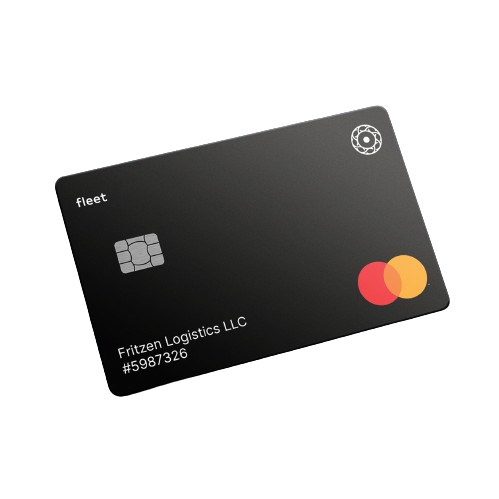Your Pre Trip Inspection Checklist: 5 Steps
Whether you’re headed out for an overnight delivery or a simple day trip, a proper pre trip inspection of your vehicle will help you identify potential problems before they can throw a wrench in your travel schedule.
Pre trip inspections are a must for both long-haul deliveries and casual road trips. But fleet drivers and owner-operators should take extra care to check that their vehicles are up and running before hitting the road. It’s a must not only for the safety of you and others on the road, but also for your efficiency and the optimal operation of your vehicle.
In this guide, we’re breaking down everything professional drivers should review before starting their next trip. We’ll cover the basics and provide a comprehensive pre trip inspection list you can use as you go along. While this guide is specifically tailored toward professionals (semi-truck drivers or fleet van operators, for instance), fleet drivers and everyday commuters alike can use this checklist to enhance driving safety.
What Is a Pre Trip Inspection for Fleets?
So, what is a pre trip inspection exactly? At its core, a pre trip inspection is a stepwise review that ensures that a vehicle’s major components are in working order before a trip 1. Pre trip inspections should:
- Test major vehicle components (e.g., brakes, headlights, and brake lights)
- Review components of safety and emergency kits
- Record important vehicle inspection information for tracking or documentation purposes
For professional drivers, performing a pre trip inspection is like checking to make sure you have all of the necessary ingredients before cooking a meal. Instead of discovering that you’re out of chocolate chips in the middle of making cookie dough, you can take action (like heading to the grocery store to get some) before you start preparing the dough if your inventory is low.
In the context of a truck’s preparation for a long journey, instead of discovering that they don’t have a spare tire after running over a nail on a trip, drivers should use a pre trip periodic inspection to make sure they have the necessary tools (like a spare or a patch kit) to fix the problem before hopping into the driver’s seat.
{{CTA}}
5 Pre Trip Inspection Steps for Fleet Managers and Drivers
Now that you understand the basic philosophy behind a pre trip inspection—identifying and fixing potential problems before they potentially disrupt your trip—let’s break down five major vehicle inspection areas to review before heading out on your next job.
#1 Interior Items
A commercial driver should always carry a few critical tools in the cab during travel. The following interior items are critical components of any robust pre trip inspection list:
- Identification and paperwork – Make sure you have your driver’s license, insurance, registration, certification, or any other relevant paperwork you’ll need to identify yourself or your vehicle during an emergency or a traffic stop.
- Payment method – Even if you don’t plan to stop for food, you should ensure that you have your fuel cards or another payment method on-hand for refueling or incidental purchases (like roadside meals).
- First aid kit – A first aid kit can help you dress wounds, triage injuries, and address other emergency situations in the field. A quality first aid kit should include bandages in varying sizes, a few pairs of latex or nitrile gloves, antiseptic wipes, antibiotic ointment, tweezers, and a few doses of over-the-counter pain medications (like aspirin or ibuprofen) 2.
- Emergency kit – While we’ll break down what you should include in your emergency stop kit in the next section, make sure that you have a visual on your emergency kit and double-check its contents before you depart.
- Personal care and hygiene items – If you’re headed out for an overnight trip, don’t forget personal care essentials like a toothbrush and toothpaste, prescription medications, menstrual products, or anything else you might need to maintain your hygiene while away from home.
#2 Safety Checks
Before heading out on your next delivery job, don’t forget to perform some basic safety checks. Arguably the most important is reviewing the contents of your emergency stop kit—the items you might need if you blow a tire, have a mechanical problem, or get in an accident.
Your emergency stop kit should include:
- Flares (be sure to check expiration dates) 3
- Flashlights or headlamps (preferably a primary light and a spare)
- Spare tires
- Jacks
- A tire iron
- Reflective triangles or small barricades
- Personal protective equipment (e.g., a reflective vest or heat-resistant gloves)
- Jumper cables
You’ll also want to have a basic mechanical tool kit, including:
- A torque or socket wrench
- Screwdrivers
- Pliers
- Zip ties
- Duct tape
In addition to checking your emergency stop kit, you should also review other critical safety items before your trip:
- Check for active vehicle or component recalls.
- Make sure that your fire extinguishers aren’t expired.
- Ensure that your seatbelts are in working order.
- Test that your emergency radio is working.
- Make sure you have a backup cell phone charger or battery pack.
- Carry a small amount of cash for emergency purchases.
#3 Gauges
Once you’re satisfied with your vehicle safety checks, review your instrument panel and gauges. This step in your pre trip inspection checklist serves two purposes:
- Ensuring that your vehicle is in working order.
- Recording any pertinent information, like your odometer reading.
If your employer requires drivers to record their odometer readings or reset their trip meters before departure, make sure to complete these tasks before you hit the road. Extra-vigilant drivers might also record their odometer readings after refueling or before their return trips.
After completing any necessary documentation, take a close look at your dashboard lights to make sure you don’t have any active warnings, like:
- A check engine light
- A tire pressure warning
- Low fuel indicators
You’ll likely have to start the engine to assess your instrument panel, but making sure that your vehicle turns on and off without issue is also a useful step in a pre trip checklist.
#4 Mechanical Checks
Ensuring proper ignition and cool-down are just two of many mechanical checks that should be included in a proper pre trip inspection. Before hitting the road, ensure that other mechanical items are functioning properly, like:
- Lights, signals, and horn – Test your headlights (including high beams), brake lights, turn signal lights, horn, and hazard lights before departure. You might need a partner to test your brake light functions—ask a fellow car or truck driver to stand at the rear of your vehicle (in view of your mirrors) while you depress the brake pedal. Asking a partner to help check your regular and turn signal lights can also help you save time in your pre trip procedure.
- Brakes – If your vehicle has air brakes, watch your pressure gauge and watch for major pressure drops while you depress the brake pedal. If your vehicle doesn’t have air brakes, make sure your brakes don’t feel spongy, your brake linings are in place, and your vehicle doesn’t pull to one side when you depress the brake pedal at a slow, safe speed. Also, be sure to test the parking brake for extra measure.
- Battery – Check that you have sufficient battery using a multimeter. Different batteries have different charge capacities, so make sure to establish maximum capacity before taking a measurement. If your battery is low, consult a mechanic or consider replacing it before your trip.
- Climate control – While it might sound like a luxury, climate control is a must for today’s professional drivers—especially drivers making long-haul or overnight trips. Make sure that both the heat and air conditioning are in working order before departure.
- Fluid levels – Check your oil, coolant, windshield wipers, and hydraulic power steering fluid levels before departure (and levels of any other additional fluids used in your vehicle). Add more fluids or consult a mechanic if any of your levels are below the threshold.
- Tires – Check the condition and measure the air pressure of each individual tire (including your spare) before heading out on your next trip. Use an air compressor on your fleet lot (or at the next available fuel station) if any of your tires are low. In addition, look for signs of leaks and patch or replace any punctured or leaking tires.
#5 Exterior Checks
Finally, review the exterior of your vehicle and record (or address) any outstanding issues. You’ll want to assess your vehicle body and check for any previously undocumented:
- Scratches
- Dents
- Paint chipping
- Bent metal
In addition, you’ll want to:
- Check that your license plate is intact, visible, and in-date
- Ensure that your hood, hatches, and fuel cap are secure
- Make sure that you’re carrying the keys for locking fuel doors and caps
- Look for windshield and window cracks
Professional drivers should document any damages to their vehicles—even if they’re small or don’t impact the function of the vehicle. Use your smartphone to take photos, and make sure these photos are uploaded to the cloud. Photos are particularly useful when filing insurance claims, so consider taking “before” photos of your vehicle prior to each trip 4.
If you lease your vehicle or drive a fleet truck, make sure your inspection report includes any damages to management before you hit the road. Even if you think a blemish is minor, your fleet manager may want to fix the problem before sending your vehicle back into the field to prevent additional damage and reduce fleet expenses in the future.
Embrace Tomorrow’s Trucking Technologies with AtoB
Conducting a periodic inspection can help you prioritize safety on the road and solve potential vehicle issues before they interrupt your next job. Assessing your interior, performing safety checks, checking your gauges, testing your mechanical functions, and addressing exterior issues are all part of a comprehensive pre trip inspection checklist. And now that you’ve got these tips and tricks under your belt, learn about what goes into a post trip inspection.
Today’s trucking technologies make it easier than ever to inspect vehicles, conduct fuel tracking and related purchases, handle driver payroll, and more. With AtoB, you can take complete control of your fleet with a multi service fuel card. Our platform is simple, sleek, and user-friendly—and we’re dedicated to helping fleet managers, owner-operators, and professional drivers optimize every trip.
If you’re ready to start saving money and time, fill out your AtoB fuel card application today.
Sources:
1 US Department of Transportation. Vehicle Inspections. https://csa.fmcsa.dot.gov/safetyplanner/MyFiles/SubSections.aspx?ch=22&sec=65&sub=148
2 American Red Cross. Making a First Aid Kit. https://www.redcross.org/get-help/how-to-prepare-for-emergencies/anatomy-of-a-first-aid-kit.html
3 California Coastal Commission. Disposal of Expired Marine Pyrotechnic Flares. https://documents.coastal.ca.gov/assets/water-quality/marina-boating/factsheets/Marine%20Flares%20Disposal%20Factsheet%20-%20rev%2012-2-19.pdf
4 Direct Auto Insurance. 8 Tips for Taking Pictures After a Car Accident. https://www.directauto.com/learning-center/car-insurance/how-to-take-car-accident-pictures
Get started with AtoB

Reviewed by
Vedant Khamesra is the driving force behind product management at AtoB. Specializing in strategic partnerships, SMB solutions, and new product development, Vedant seamlessly navigates P&L responsibilities while leading product execution and strategy. He is fueled by AtoB's mission to empower truckers and fleets with intelligent financial tools and services, making their lives easier and more rewarding.



